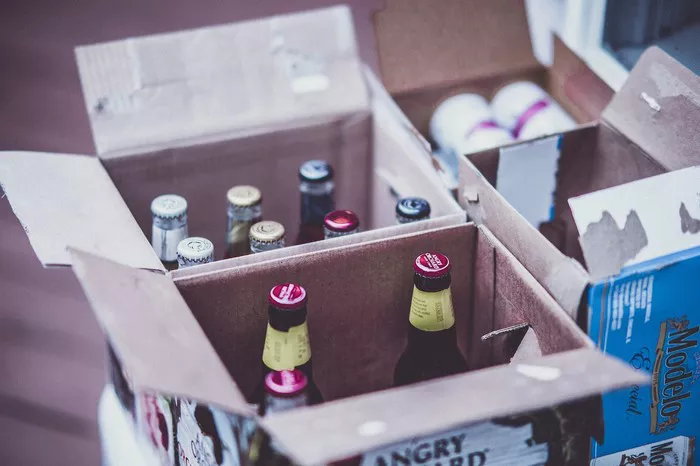Red Horse Beer, a staple in many beer enthusiasts’ repertoire, has garnered attention for its robust flavor and potent kick. Central to its allure is its alcohol content, a factor that plays a pivotal role in shaping the beverage’s reputation and appeal. In this article, we delve deep into the intricacies of the alcohol content of Red Horse Beer, exploring its composition, variations, and implications for consumers.
Understanding the Alcohol Content of Red Horse Beer
At the heart of any discussion surrounding Red Horse Beer lies its alcohol content. Renowned for its high alcohol by volume (ABV), Red Horse Beer stands out among its peers in the beer market. The alcohol content of Red Horse Beer typically ranges between 6.9% and 8%, making it substantially stronger than many conventional beers. This elevated ABV contributes to its distinctive flavor profile and the intense sensation it delivers upon consumption.
The Brewing Process: Impact on Alcohol Content
To comprehend the alcohol content of Red Horse Beer fully, it’s imperative to dissect the brewing process employed by its manufacturer, San Miguel Brewery. Unlike traditional beers, which undergo a single fermentation process, Red Horse Beer undergoes double fermentation. This unique method involves an initial fermentation stage followed by a secondary fermentation process, during which additional sugars are converted into alcohol. Consequently, this dual fermentation process results in a higher alcohol content compared to standard beers.
Variations in Alcohol Content: Exploring the Spectrum
While the standard Red Horse Beer boasts a formidable alcohol content, variations exist within the Red Horse brand that cater to different consumer preferences and market segments. One such variant is the Red Horse Extra Strong, which elevates the alcohol content to a staggering 8%. This amplified potency intensifies the beer’s flavor profile, appealing to enthusiasts seeking a more robust and impactful drinking experience. Conversely, Red Horse Malt presents a milder alternative, featuring a lower ABV of around 6.9%, making it suitable for individuals who prefer a less intense alcoholic beverage.
Implications for Consumers: Balancing Enjoyment and Responsibility
As consumers indulge in Red Horse Beer, it’s crucial to acknowledge the implications of its elevated alcohol content. While the heightened ABV contributes to the beer’s allure, it also necessitates responsible consumption. The potent nature of Red Horse Beer demands moderation and mindfulness to avoid excessive alcohol intake and its associated risks. Educating consumers about the importance of pacing oneself and knowing one’s limits is paramount in fostering a culture of responsible drinking within the Red Horse community.
see also: Is Peroni Good Beer?
Navigating Cultural Significance: Red Horse Beer in Social Context
Beyond its alcohol content, Red Horse Beer holds cultural significance in various communities where it is consumed. In the Philippines, for instance, Red Horse Beer has become synonymous with camaraderie, celebrations, and social gatherings. Its robust flavor and high alcohol content make it a popular choice for festive occasions and bonding moments among friends and family. However, it’s essential to recognize the fine line between cultural appreciation and the promotion of responsible consumption, ensuring that the enjoyment of Red Horse Beer remains tempered with awareness of its effects.
Regulatory Considerations: Compliance and Standards
In light of its elevated alcohol content, Red Horse Beer must adhere to regulatory standards and guidelines to ensure consumer safety and satisfaction. Regulatory bodies such as the Food and Drug Administration (FDA) oversee the production and distribution of alcoholic beverages, imposing limits and requirements on factors such as alcohol content labeling, packaging, and advertising. By complying with these regulations, San Miguel Brewery upholds its commitment to delivering a high-quality product while safeguarding consumer welfare.
Emerging Trends: Evolving Preferences and Innovations
The landscape of alcoholic beverages is constantly evolving, driven by shifting consumer preferences and emerging trends. In response to evolving tastes and market demands, breweries like San Miguel continue to innovate, introducing new variants and flavor profiles to cater to diverse audiences. Whether through experimentation with ingredients, brewing techniques, or packaging designs, breweries seek to maintain relevance and captivate consumers in an ever-changing market environment.
The Future of Red Horse Beer: Sustaining Tradition Amidst Innovation
As Red Horse Beer navigates the complexities of the modern beverage industry, it remains steadfast in its commitment to quality, tradition, and innovation. Balancing its signature high alcohol content with responsible consumption practices, Red Horse Beer continues to captivate drinkers worldwide, forging enduring connections and fostering memorable experiences. With a nod to its rich heritage and an eye towards the future, Red Horse Beer stands poised to remain a cornerstone of the global beer landscape for years to come.
Conclusion
In conclusion, the alcohol content of Red Horse Beer serves as a defining characteristic that distinguishes it from other beers in the market. From its double fermentation process to its variations in potency, Red Horse Beer embodies a commitment to quality and craftsmanship that resonates with consumers worldwide. However, with great potency comes great responsibility, and it is incumbent upon consumers to approach Red Horse Beer with mindfulness and moderation. By balancing enjoyment with awareness, consumers can fully appreciate the distinctive flavors and experiences that Red Horse Beer has to offer, ensuring that its legacy endures for generations to come.


